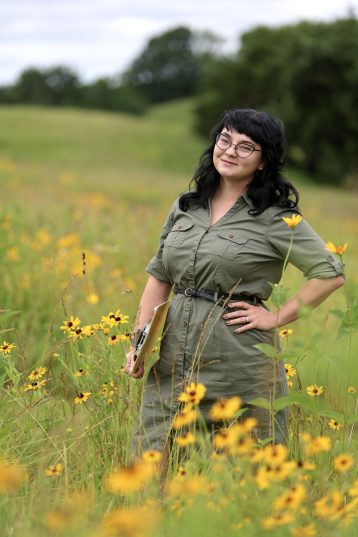I’m not really a weather person. I don’t pay that much attention to forecasts or spend a lot of energy worrying about the weather. No amount of fretting or obsessively checking a weather app is going to change the outcome, so this is one worry I have just decided to let go.
This year? This year is different. This year has tried our hardy Midwestern souls and left even the most fervent “I love winter” folks browsing for cheap flights to Florida on their lunch breaks.
But here’s the thing: The tiny seed of hope, the light at the end of the tunnel is that we know it will get better. We don’t know when, but we know, eventually, the tide will turn and it will warm up.
Here at Convivium, it’s this time of year — these last interminable days of winter — that we put our faith in the changing of the season and start the seeds that eventually will help feed our customers and neighbors throughout the summer. That process never fails to fill me with awe. In a makeshift greenhouse in our grody basement at Convivium, we begin the process that eventually will fill more than 9,000 square feet of garden space and produce hundreds of pounds of vegetables.
This doesn’t all just magically happen. We put a great deal of work into planning our crops each season. AJ, our farm manager, has a very detailed and sophisticated plan for starting seeds, maps that indicate what should be planted where and takes into account previous season’s crops, sunlight, what is going to be used the most and proximity to our kitchen. We usually spend a four- to six-week period during the winter getting all our ducks in a row for the next season.
While you certainly are not discouraged from this level of planning and sophistication for your home garden, it might be a bit much for a beginner. But then, doing no planning isn’t the best either. So, what should a beginning home gardener be doing right now to set themselves up for success during the upcoming growing season?
Refer to your recipe file
While you might be enamored with that super cute picture of a cherry tomato planter on Pinterest, if no one in your family eats tomatoes, what’s the point? When are you thinking about your garden, really think about what you are going to use and how much you are going to use. Be realistic. Even a few plants can produce a lot of vegetables. If you are not into canning or other food preservation, be careful not to plant too much.
Figure out the why — and keep it in mind
Maybe food production isn’t the primary reason for your garden. Maybe it’s exercise or a chance to spend time outside with your kids. Remembering the why is important in keeping yourself motivated during the weeding and watering necessary for a successful harvest.
Location, location, location
This one is a biggie. If you don’t already have a garden plot in your yard, you are going to have to prepare one. What things should you take into consideration when choosing your location? Sunlight is a big one. Pay attention to your trees and how much shade they throw, or at least remember that those leafless wonders will eventually fill out and affect sunlight dramatically. Southern exposure is better than northern exposure, if you have the option.
Pay attention to the location of your water source. Can you easily water your garden? Watering, especially in the first few weeks when the plants/seeds are in the ground, is critical to strong and successful plants throughout the rest of the season. If you are hauling watering cans from the other side of the house, that will get old fast. So, think about your water access ahead of time. There also are ways to water your garden other than your hose — you can use a rain barrel and fill your watering can from there.
Space constraints
Be realistic with your space. It is easy and fun to grow pumpkins, for instance, but they take up a lot of space when they grow. So, either plan for that or forgo the pumpkins until you have the best spot for them.
Set yourself up for success
If you are new to gardening, you should set yourself up for success by choosing easy-to-grow (nearly) fool proof vegetables. Those include: Leaf lettuce, radishes, zucchini, kale, potatoes, garlic, green beans, peas, cucumber and cherry tomatoes.
You want to buy bedding plants whenever you can, instead of start things from seed. What you sacrifice in variety, you will make up for in ease and hardiness to the climate zone that we live in. Nurseries in the area will only be selling vegetable varieties that will work well in our climate.
Leslie Shalabi is co-founder of Convivium Urban Farmstead, a Dubuque-based nonprofit organization based on the idea of creating community around food. A life-long lover of food and entertaining, she is dedicated to helping people find ways to connect through the universal languages of food and hospitality.

















